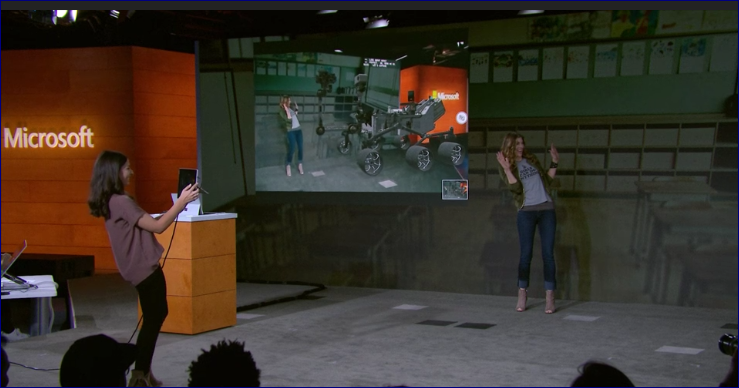Based on today's news from Google about the launch of their ARCore development kit and Apple's introduction and launch of their ARKit back at WWDC in early June of this year, it feels like Microsoft is now playing catch up in an area they actually announced ahead of both companies.
I am not talking about HoloLens here because Microsoft surprised the entire tech scene and caught everyone off guard when they announced HoloLens back in January of 2015 at their Windows 10 event on the 21st of that month. They continue to lead in that area without issue and it looks like a second generation device is in the works.
This also isn't about Microsoft's partnership with several OEMs to build head mounted displays that will connect to Windows 10 PCs. That announcement was made last October and the software was part of the Creators Update released this past April. However, the hardware is just become available to developers over the last few weeks but they are not expected to be widely available through retail channels for a few more months.
What this is about - Augmented Reality (AR) on mobile and/or portal devices.
First - some history:
Back in early May Microsoft actually teased this during their education event's keynote when they used an app called View Mixed Reality to superimpose a model of NASA's Curiosity Rover onto the keynote stage next to one of the presenters.

View Mixed Reality Demo at Microsoft Education Event in May 2017
At that time it was announced that this capability would be part of the yet unnamed Fall Creators Update. Since then nothing much else was discussed or shared about this capability including its availability on Windows 10 Mobile devices.
Just two weeks ago the View 3D app demoed in May was finally released to Windows Insiders in the Release Preview Ring. Testers could finally place 3D images in their local environment and view it through the devices RGB camera or an external webcam.

View 3D Sample Image with 3D Object Included. Note: The T-Rex is the 3D Object in this image :-)
This capability is scheduled to become widely available with the release of the Fall Creators Update in the September/October time frame but there is still no word or indication that this feature will be available on Windows 10 Mobile devices that will not be getting the same update but one from the Feature 2 branch. Since Windows 10 Mobile development diverged from the Redstone 3 branch early on, it has not been getting the same capabilities and features. Unfortunately, that also means the mobile OS is not getting some of the underlying code that likely supports this AR feature. So for right now it is not looking good for this making its way to supported Windows 10 Mobile devices. Whether that happens or not is actually not going to make a huge difference in this discussion though.
If we go back at look at the difference between what Microsoft announced ahead of Apple and Google, the big difference is that they are using their mobile platforms and hardware devices to grow this AR capability. In addition, they are also differentiating from what Microsoft has shown by adding other key features including motion and sound to their AR capabilities from the start. Using their dominance on mobile devices is a smart move and will no doubt grow the capability broadly.
We all know that Windows 10 Mobile is a dwindling platform and it looks like the final update, Feature 2, will likely be released this fall and supported until December of 2019. Even if Microsoft released this updated View 3D app the number of handsets that are out there to run the feature are limited and shrinking with the lack of new hardware releases.
In comparison, Apple and Google dominate the mobile handset market and there is no expectation that will change anytime soon. The fact that these handsets are in the pockets of so many people at this point will allow the technology to mature quickly and users are already enthusiastic about it. Just search social media to see all of the examples that are popping up.
The reality is this - no one walks around with their 8 inch Windows tablet to add 3D objects into their view of the world but everyone has a phone in their pocket - and those are primarily iPhones and Androids.
Maybe with the advent of Windows on ARM more mobility focused small form factor devices running Windows 10 will be with us like our phones but until then it certainly looks like Microsoft is going to be chasing this technology instead of leading like they did with the announcements.
-----------------------------------------
But, wait...there's probably more so be sure to follow me on Twitter and Google+.





